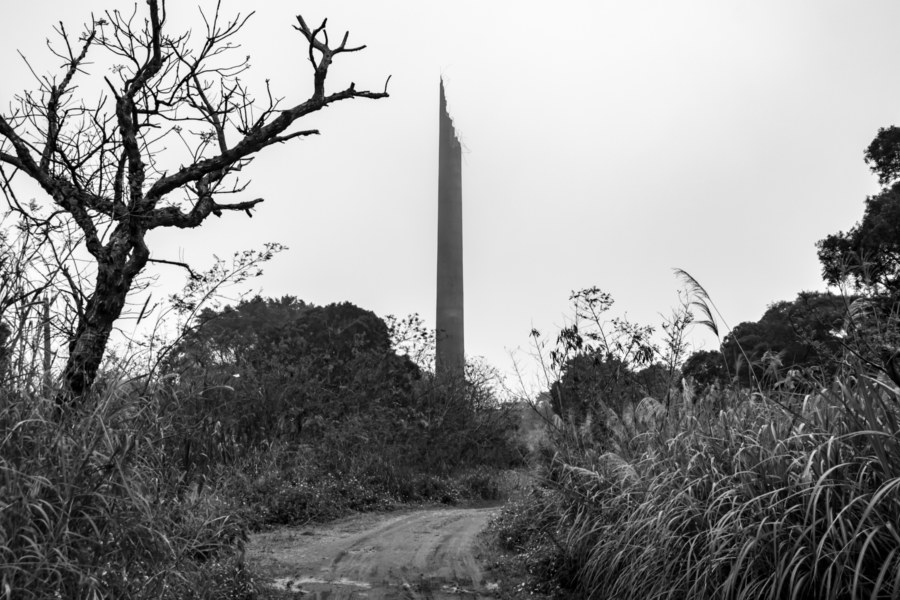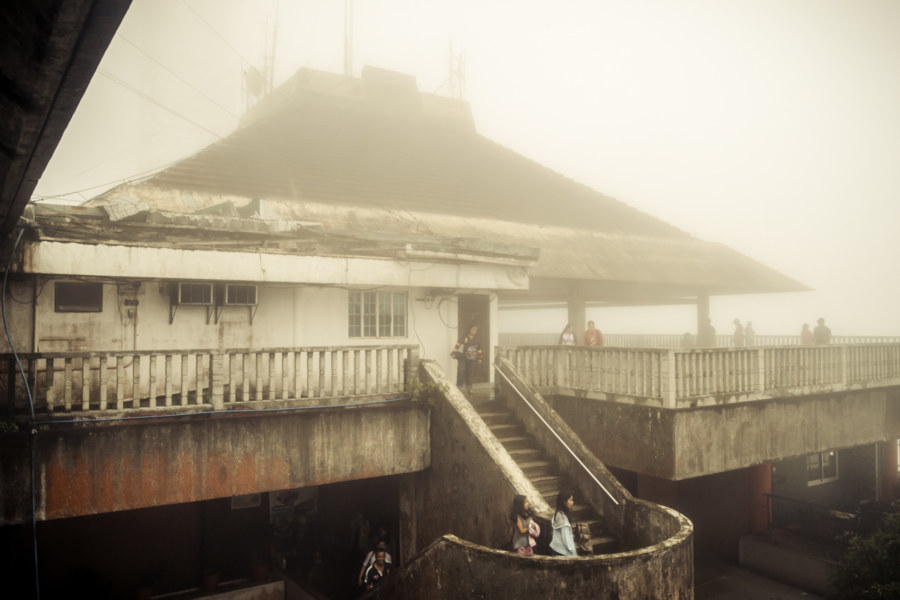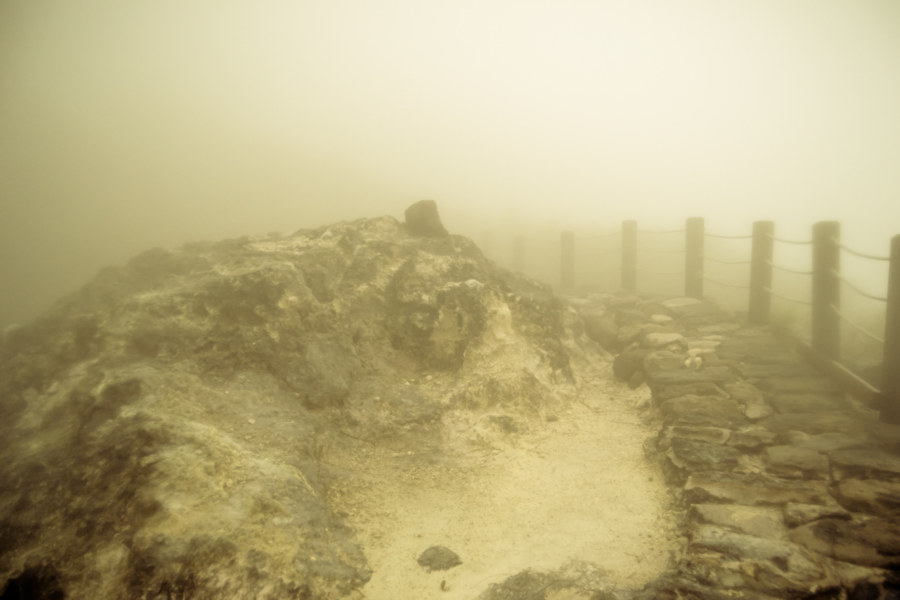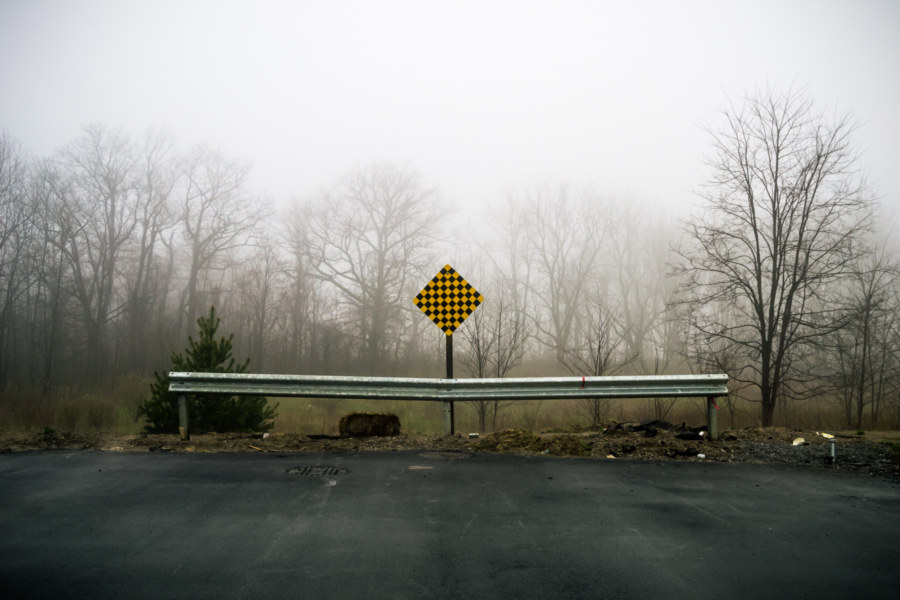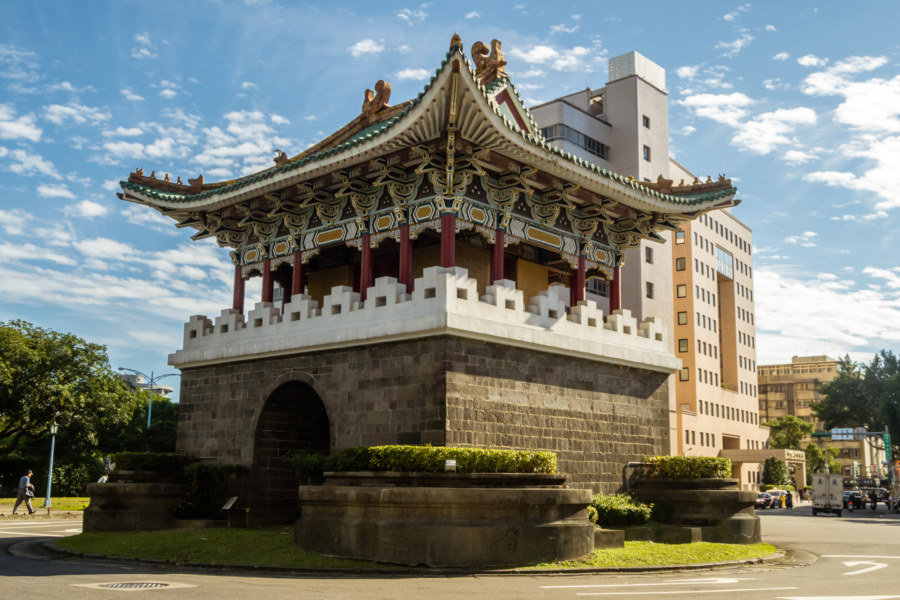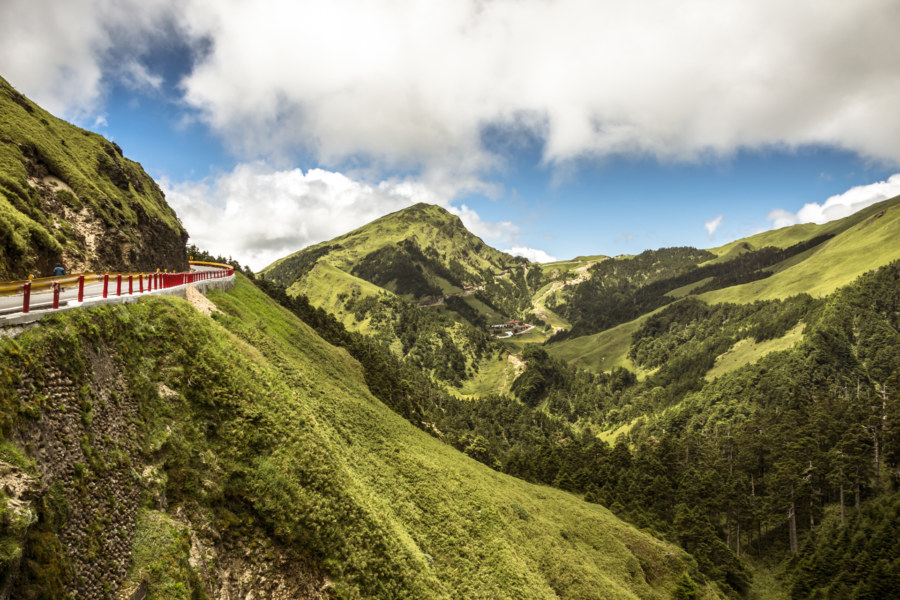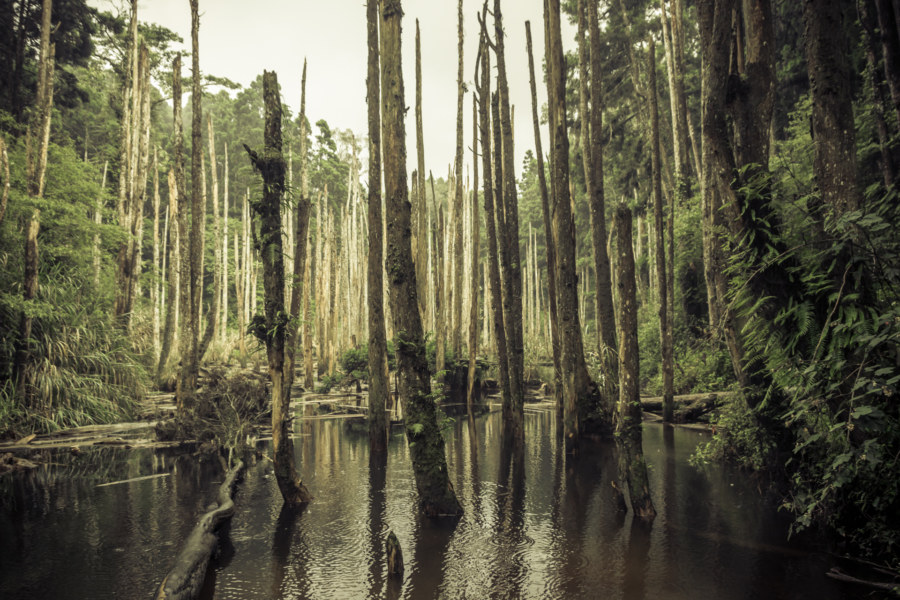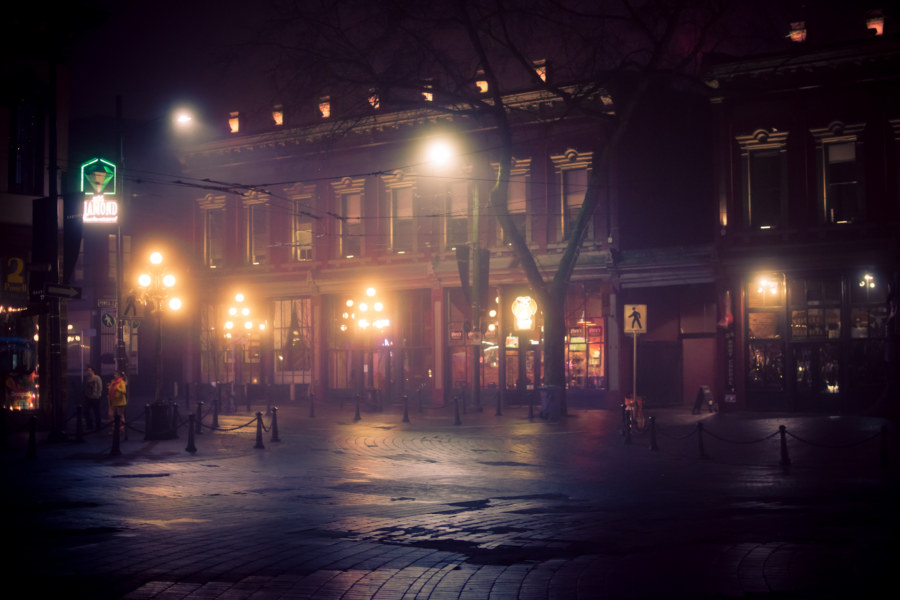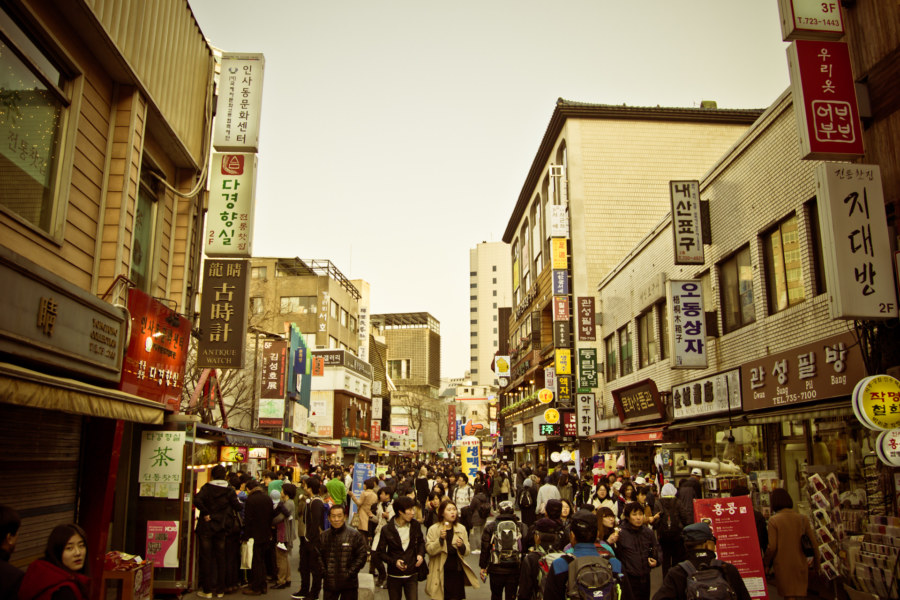Linkou, now the fastest-growing suburban district in the greater Taipei area, was once home to more than 30 brick factories, the highest concentration in northern Taiwan. Shèngtài Brick Kiln (勝泰磚窯), at the far northern extent of the Linkou Plateau, is one of the last remnants of this once-flourishing brick-making industry. Numerous ruins can be found across the sprawling site but the most impressive is a Hoffmann kiln, easily identified by its broken chimney. Hoffmann kiln technology was introduced to Taiwan during the Japanese colonial era but this particular kiln only dates back to the mid-1960s, and it has now been abandoned for many decades.
Strange shapes taking form in the sky. The ambient conditions of day and night.
Subterms
Adjacent Terms
People’s Park in the Sky
People’s Park In The Sky is a peculiar attraction located about 60 kilometers south of Manila in Tagaytay, a popular leisure destination in the province of Cavite in the Philippines. Perched on top of Mount Sungay at an elevation of 709 meters, the highest point on the northern rim of the immense Taal Caldera, it was originally planned to be a palace suitable for state visits during the kleptocratic reign of Ferdinand Marcos. Construction began in 1979 with a drastic leveling of the mountaintop, which previously reached 759 meters, but ground to a halt with increasing civic unrest and the cancellation of Ronald Reagan’s state visit in 1983. Following the People Power Revolution of 1986 the unfinished mansion was transformed into a public park and monument to the greed, corruption, and excess of the Marcos era.
A Foggy Hike in Yangmingshan 陽明山
These photographs were taken in early October 2013 while hiking around Yángmíngshān National Park (陽明山國家公園). After meeting up with a friend we took a bus from Jiantan Station in Shilin to Lengshuikeng with the intention of checking out Milk Lake (Niúnǎichí 牛奶湖). Racing up the meandering mountainside roads we soon found ourselves immersed in an interminable fog. Debarking at the bus stop, with hardly another soul around, we decided to wander around and see what we could make of our time in Yangmingshan.
On the Edge of Suburbia
I came of age on the edge of suburbia, where cookie-cutter housing projects end and the surrounding countryside begins. Decades later, again I find myself perched on the edge, further west than when I was young but still at the very end of one little patch of suburban sprawl.
Taipei Xiaonanmen 臺北府城小南門
Today is winter solstice, the shortest day of the year in the northern hemisphere, and it is a record-breaking 30°C in Taipei. In Chinese culture it is customary to consume tāngyuán (湯圓, glutinous rice balls typically immersed in hot, sweet soup) on winter solstice, better known to locals as Dōngzhì (冬至), a time when families gather together and celebrate growing one year older. Since I have no family here I will be lining up at 36 Yuánzǐ Shop (三六圓仔店) for a bowl sometime later on—though I might just skip this particular ritual if the line-up is too crazy. Two years ago I was informed, contrary to expectations, that you won’t actually age without eating tangyuan on dongzhi. If I miss it this year I suppose I won’t mind.
Crossing the Central Mountain Range of Taiwan 中央山脈機車之旅
In the summer of 2014 I was nearing the end of my first sojourn in Taiwan. By the beginning of August I would be in Canada for a wedding in the family with no idea what I’d be doing after that. Since I wasn’t sure if I would be returning to Taiwan I made vague plans to go on a road trip. With only about a week to go before my departure the weather took an ominous turn as Typhoon Matmo 麥德姆 barrelled toward the island. On July 20th, with the pressure of time bearing down on us, my girlfriend and I hopped on a 125cc scooter—the same kind of dinky, puttering scooter you see people riding around any Taiwanese town—and set out from Changhua with the goal of crossing the Central Mountain Range 中央山脈 at Wǔlíng 武陵, the highest paved (and publicly-accessible) mountain pass in Taiwan at 3,275 meters above sea level. With luck, time and weather permitting, we’d be able to visit Héhuānshān 合歡山 and maybe even drive down into the amazingly scenic Taroko Gorge 太魯閣峽谷 on the east side of the island.
Nantou’s Misty Lotus Forest 忘憂森林
Collected here are a series of dreamlike photos from a road trip into the misty mountains of Lugu in Nantou, central Taiwan. I undertook this trip with a friend in July 2014. Our goal was the Lotus Forest 忘憂森林 (pinyin: Wàngyōu Sēnlín), also known as the Misty Forest 迷霧森林, a high mountain bog formed in the aftermath of the catastrophic 921 earthquake when a landslide altered drainage patterns, forming a small lake and drowning part of the existing forest. At an elevation somewhere close to 2,000 meters, the Lotus Forest is often shrouded in thick fog, imbuing it with an eerie mystique that attracts Taiwanese people from all over the island.
Vancouver in the Winter Fog
Vancouver recently lay under cover of fog for days. This prompted me to grab my camera to find out what could be captured of such mysterious atmospheric conditions. I ventured out into Stanley Park with a tripod one night only to discover that there really isn’t any light to work with. I couldn’t discern the skyline through the thick mire. In fact, I could hardly even see a few meters in front of me. I called that mission off and headed out the next day over Burrard Bridge, around False Creek, and back to the West End by way of Gastown. This time I did not bring a tripod—hence the grainy quality of some of these later photos, all of which were shot by hand with a fixed 35mm lens.
The Dark Side of Seoul
Today the weather changed. Rain has given way to light snow, strong winds, and subarctic temperatures. Gusts of up to 60 km/h have rattled windows and knocked over street furniture. After drying my shoes from the previous night’s misadventures I left my hostel for Insadong, intent on grabbing a hearty breakfast, but as the minutes began to drag I only allowed myself time to grab one of those delicious mung bean pancakes and a coffee. I didn’t know it at the time but I was bound for one of the darker parts of Seoul.
A Crash Course in Korean Culture
My time in Seoul has been far more hospitable thanks to the assistance of a family friend, Ellen, who teaches English here. I am extremely grateful that we met in this distant land. It is one thing to have a local guide to show you around and another thing entirely to have someone from your own culture who really understands your motivations for travel. It isn’t simply that we communicate well, though we do—she also gets my travelling style in a way that most people wouldn’t, not without a great deal of explanation.
